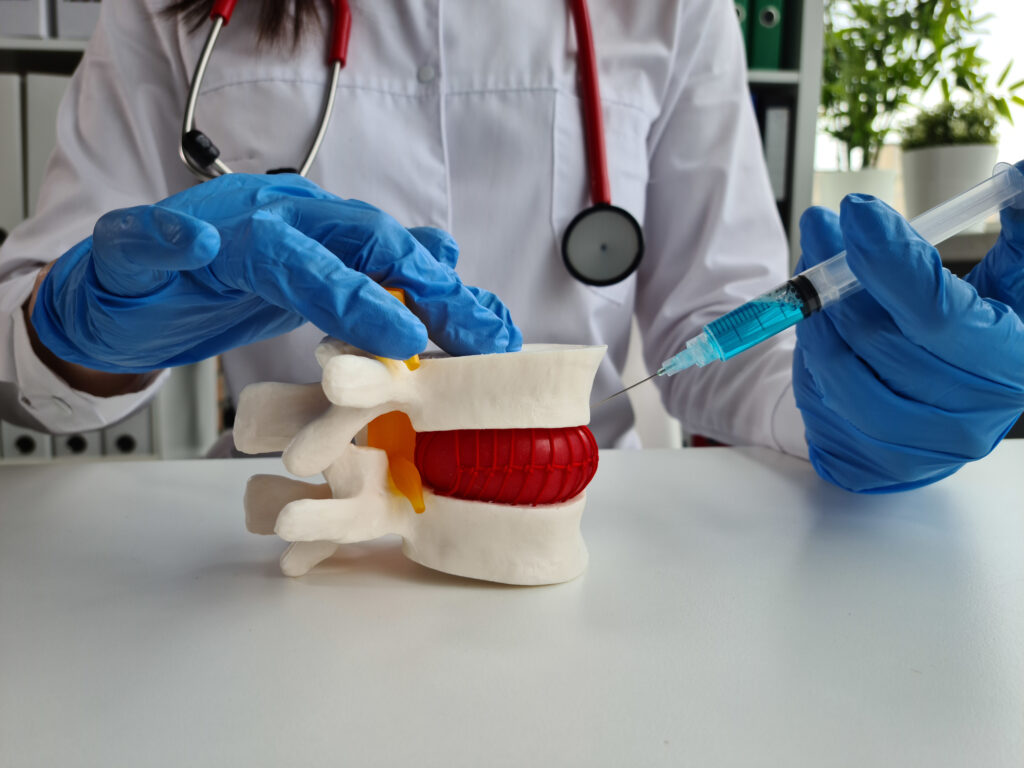Intervertebral Disc Nucleus Pulposus Allografting
Intervertebral disc nucleus pulposus allografting is a minimally invasive procedure designed to address chronic back pain caused by degenerative disc disease. Rather than simply masking symptoms, this regenerative treatment focuses on restoring the disc’s internal structure and function by introducing biologic material into the disc space. This can improve disc height, hydration, and shock absorption—relieving pressure on nearby nerves and stabilizing the spine.
The procedure is typically performed on an outpatient basis and offers a promising option for patients seeking alternatives to spinal fusion or long-term medication use.

What is it?
Intervertebral disc nucleus pulposus allografting is an advanced regenerative procedure that treats painful degenerative disc disease by replacing damaged disc material with processed donor tissue. This procedure aims to restore disc height and function while reducing pain and improving mobility.
How is it performed?
Using fluoroscopic guidance, your physician will insert a specialized needle into the affected disc. The Via Disc NP allograft material is then precisely injected into the disc space. The procedure typically takes 30-45 minutes per level treated.
Technology Partners:
Vivex’s Via Disc NP
Keypoint #1-Lorem Ipsum
Lorem Ipsum mon fringilla dolor felis amet fusce.
• Libero auctor
• Enim molestie iaculis
• Massa bibendum
• Ultrices varius
Metus euismod tellus penatibus in ex morbi euismod mollis.
Phasellus venenatis augue luctus sollicitudin elementum suspendisse.
Treatment Benefits
This allograft-based therapy supports long-term disc health by replacing damaged tissue with biologically active material. Patients often experience reduced back pain, improved mobility, and enhanced quality of life. Because it is minimally invasive and preserves the natural anatomy of the spine, recovery time is generally shorter and less disruptive compared to traditional surgical interventions.
Who Can Benefit From This Treatment
This treatment is ideal for patients with confirmed degenerative disc disease who have not responded to conservative treatments such as physical therapy, medication, or injections. Candidates typically have chronic low back pain localized to one or more discs, as confirmed by imaging. A consultation and diagnostic evaluation will help determine if this biologic approach is a suitable next step in your care plan.
Learn more about Intervertebral Disc Nucleus Pulposus Allografting by contacting the Minimally Invasive Spine and Pain Institute—our team is here to help you explore your options.
Aftercare for Intervertebral Disc Nucleus Pulposus Allografting
Following this procedure, it’s normal to experience mild back soreness or stiffness at the treatment site. Because the injection introduces new material into the disc space, it’s important to limit strain on the spine during the early healing phase. Most patients return home the same day and can resume light activity within a few days, with improvements in pain and mobility typically developing over the following weeks.
Tips for a Smooth Recovery
Follow these guidelines to support healing after intervertebral disc nucleus pulposus allografting:
- Avoid bending, lifting, or twisting for several days after the procedure
- Use cold packs to manage soreness or discomfort if needed
- Stay well-hydrated to support disc health and tissue integration
- Resume walking and light activity gradually, as directed by your provider
- Contact your care team if you experience increased pain, swelling, or numbness

